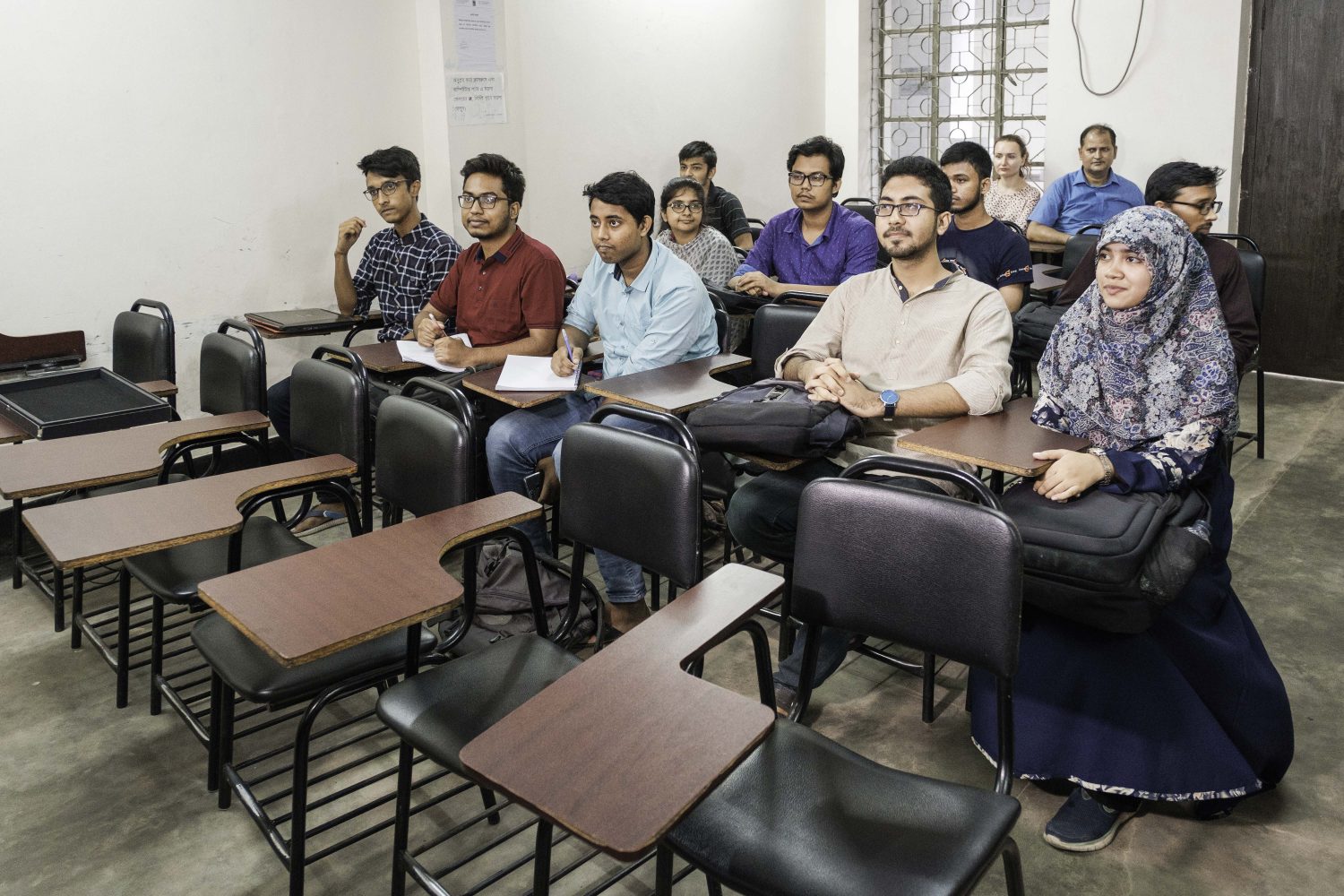
Knowing All About Atom
back to contentsConstruction work at Rooppur is going as scheduled. Russian nuclear companies keep manufacturing the necessary machinery and equipment and shipping it to the site. In late December, Atommash, a Volgodonsk-based production facility of AEM Technologies (a subsidiary of Rosatom’s engineering division Atomenergomash), manufactured more than 130 tons of embedded items for the steam generator to be installed at Rooppur NPP Unit 2.
The items were delivered to the construction site using multiple modes of transport. First, they were transported from Atommash to the Russian southern port of Novorossiysk with eight trucks and loaded onto the ship. Then they traveled nearly 12,000 km by sea. Atomenergomash is a supplier of essential machinery and equipment for the Rooppur NPP.
When the plant is commissioned and brought online, it will be operated by local staff. Bangladeshis study at Russia’s National Research Nuclear University (MEPhI) and Novovoronezh NPP. Their curriculum covers nuclear physics, chemistry and fundamentals of nuclear plant operation, including water treatment, radiation monitoring, nuclear waste management and safety. At present, 140 students from Bangladesh are trained at the nuclear power plant. In December, two students, Al Amin and Shafidul Islam, said in an interview, “Construction of a nuclear power plant is a new thing for Bangladesh. This is why ordinary people have a wrong idea about nuclear. It will take time to change their attitude.”
Novovoronezh NPP housing a reference power unit for the Rooppur NPP, receives regular delegations from Bangladesh. In mid-December, a group of Bangladesh journalists visited Novovoronezh. They had a chance to see how the nuclear power plant generated electricity and what high-tech machinery and equipment it used. They also learned what requirements nuclear plant employees had to meet. When visiting the plant, the journalists were particularly interested in technical specifications, safety systems, employee training, environmental impact, social issues and attitude of the local community. For example, the representatives of the Bangladesh press learned that more than 30,000 families live in just three kilometers away from the nuclear power plant and dozens of farms are located nearby. The plant poses no threat to the environment or health of people living there. There are 33 radiation monitoring stations located in a three-kilometer radius around Novovoronezh constantly measuring the radiation level, with environmental safety reports available to the general public.

Answering a question about “danger” of radiation, Shawkat Akbar, Director of the Rooppur Project in Bangladesh, said, “Since much attention is given to safety, the Rooppur Nuclear Power Plant will have the most advanced radiation monitoring system and the latest version of VVER-1200 reactors. There is no reason to worry that radiation will cause any damage to the environment or animals. Rooppur will have the same radiation monitoring stations as the Novovoronezh Nuclear Power Plant.” Akbar assured the journalists that people would be able to live just 300 meters away from the plant with absolutely no health hazards.
Rosatom and Bangladesh authorities joined their efforts to raise public awareness and acceptance of nuclear energy in the Asian country by organizing expert meetings and science education events. Last year, Rosatom and the Bangladesh Atomic Energy Commission (BAEC) published several books about nuclear energy in Bengali. ‘Atomic Horizon’ and ‘Various Professions in the Nuclear Industry’ were translated from Russian while the comic book ‘Unexpected Adventure of Onu’ was written and edited in Bengali. The main goal of publishing these books is to give people, especially the young generation, basic knowledge of nuclear energy and to clear the misconceptions about it by highlighting positive aspects of nuclear technology. Rosatom and BAEC also translated three popular science books on nuclear energy – ‘ABC of Nuclear Energy’, ‘Q&A on Nuclear Energy’ and ‘World of Nuclear Energy’. The books were distributed among students and general public.




